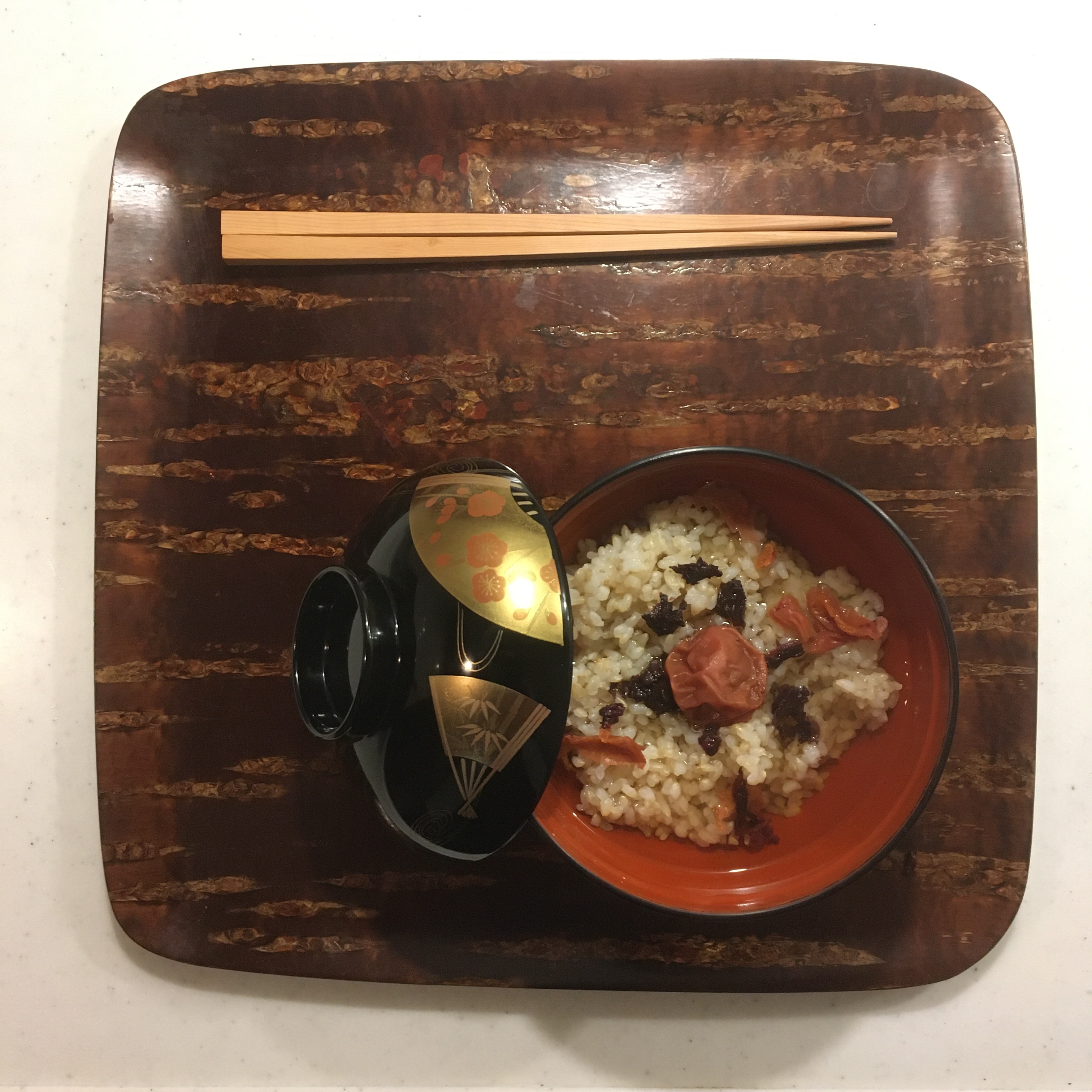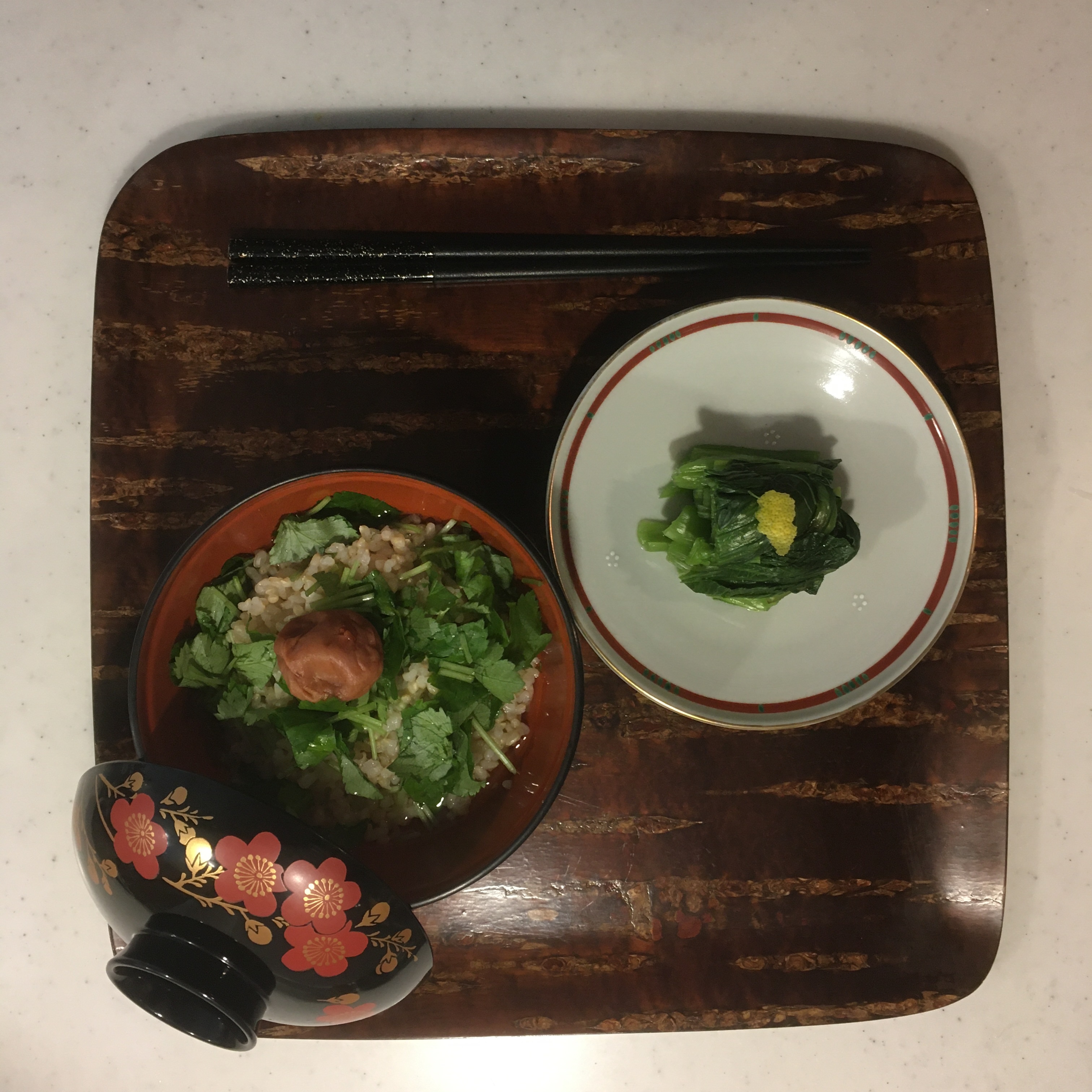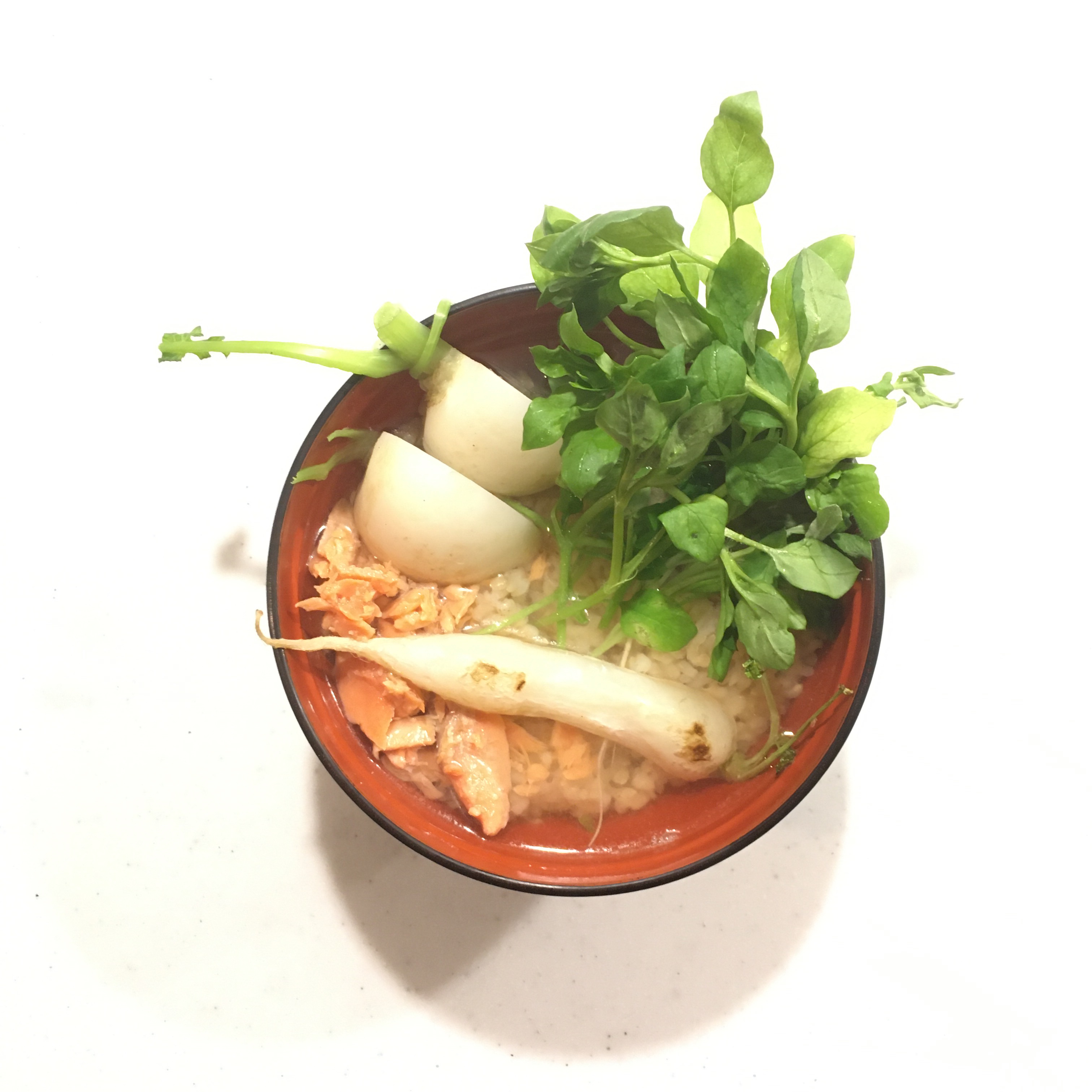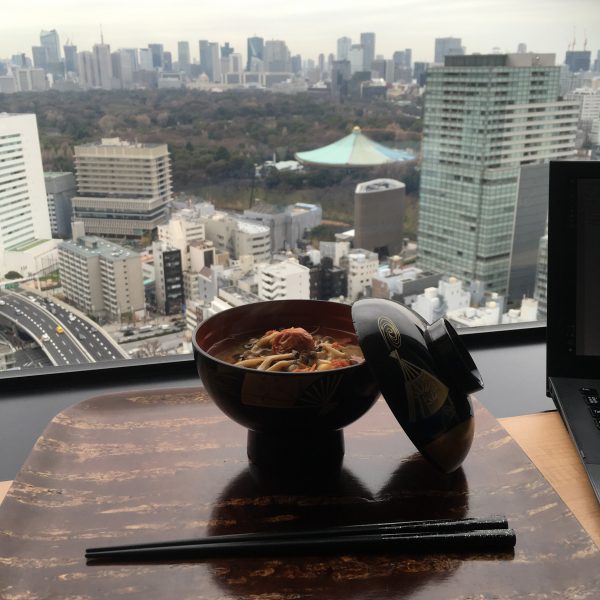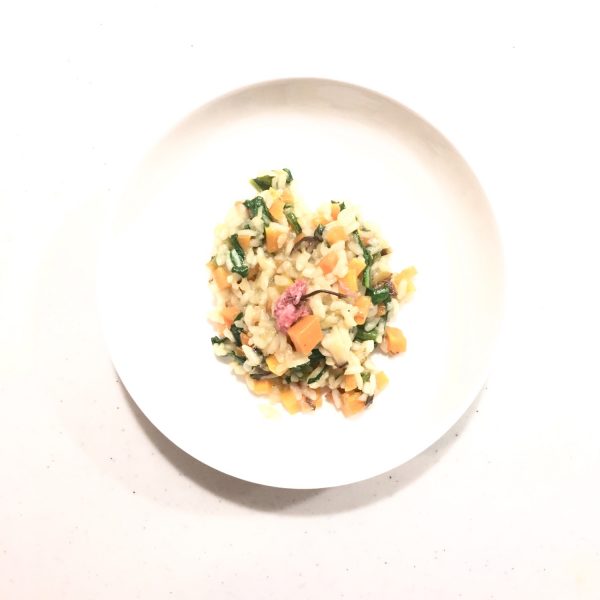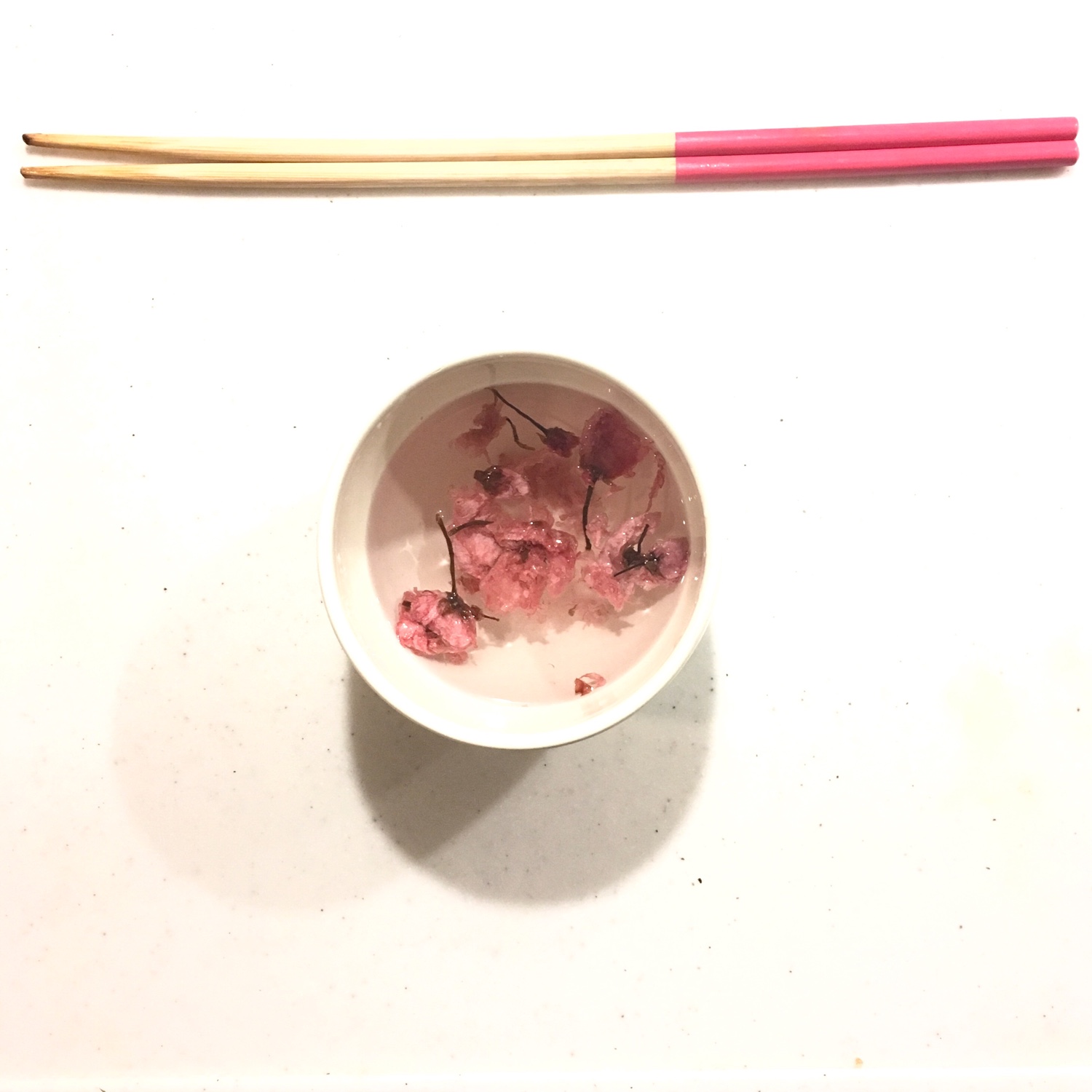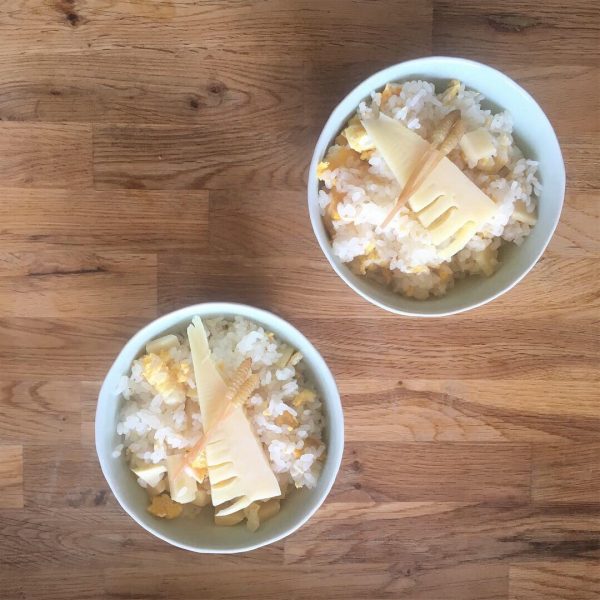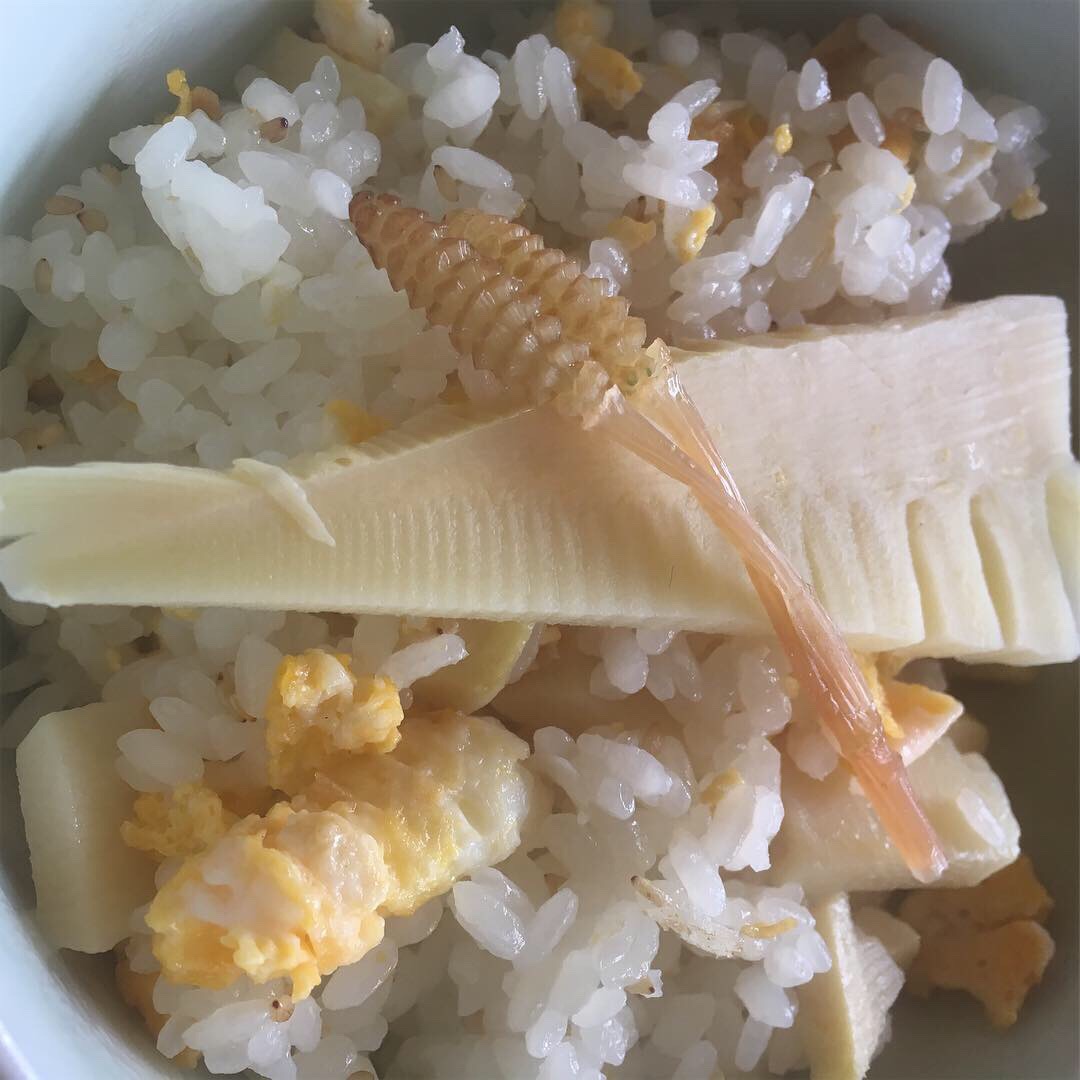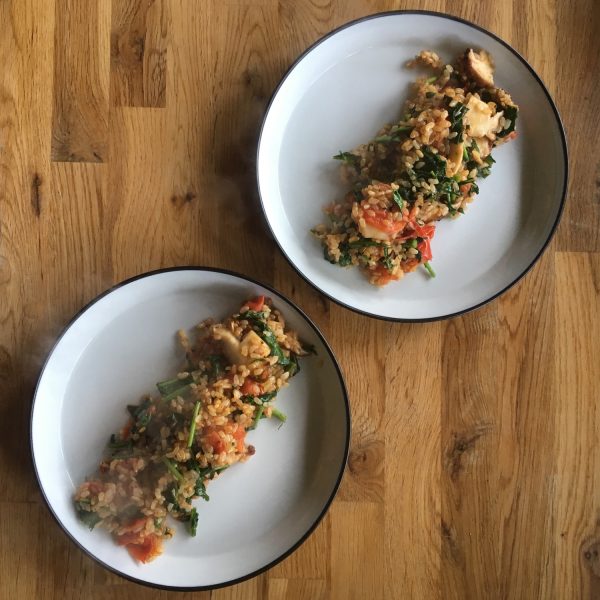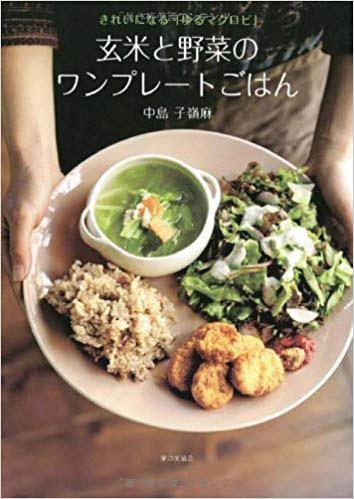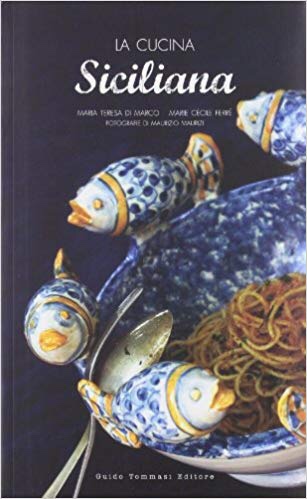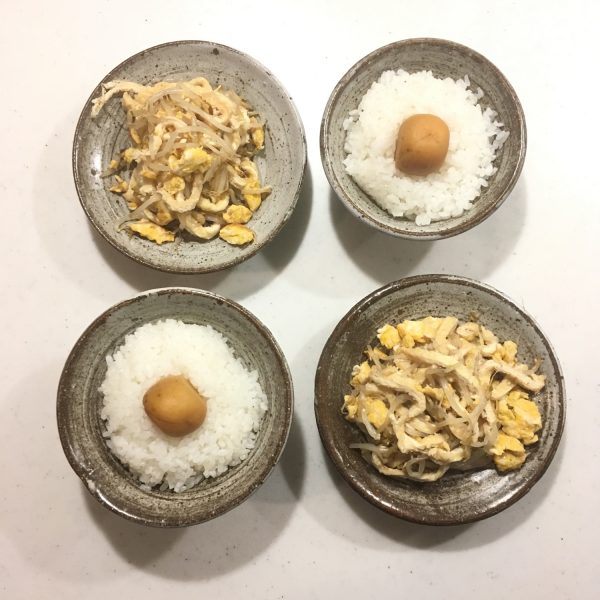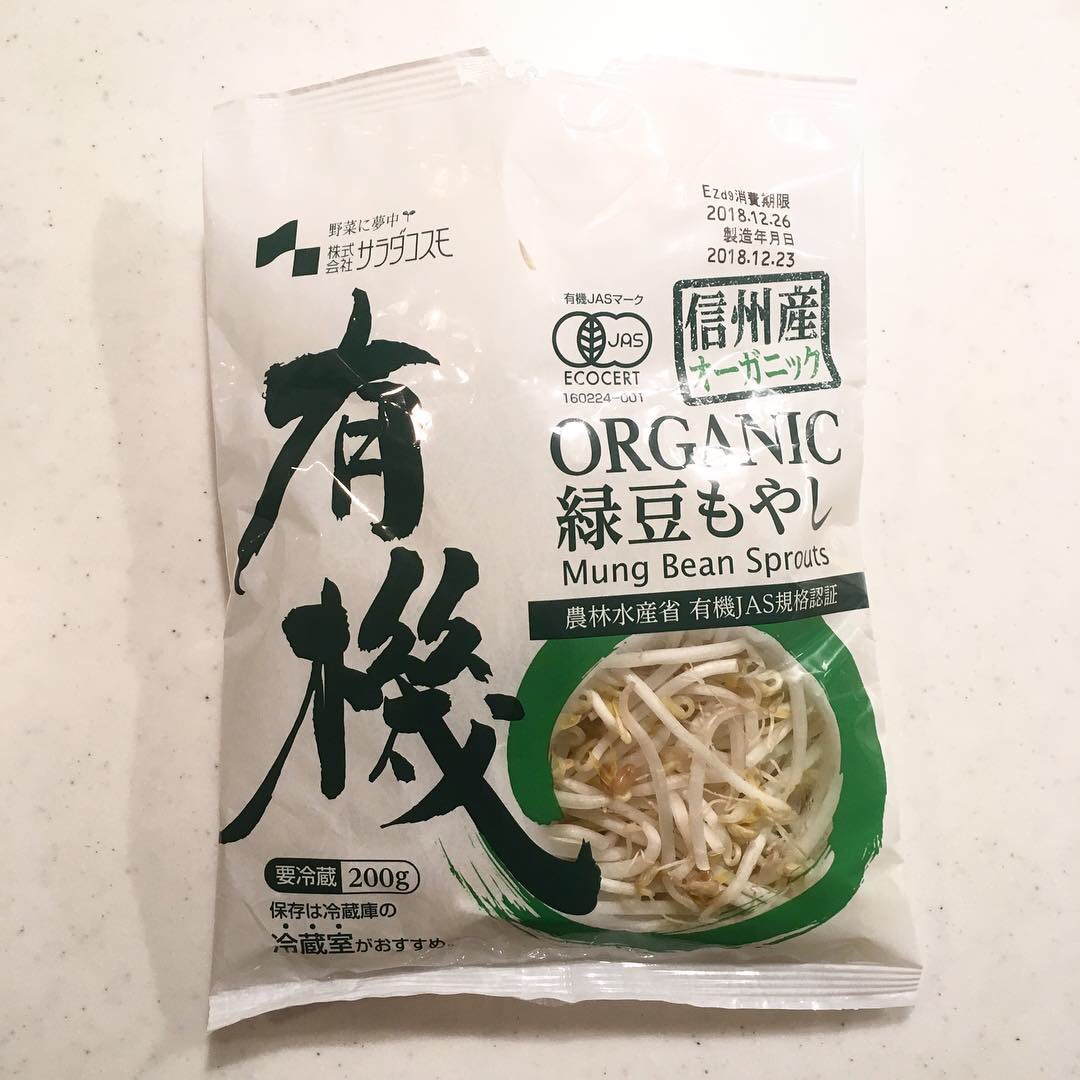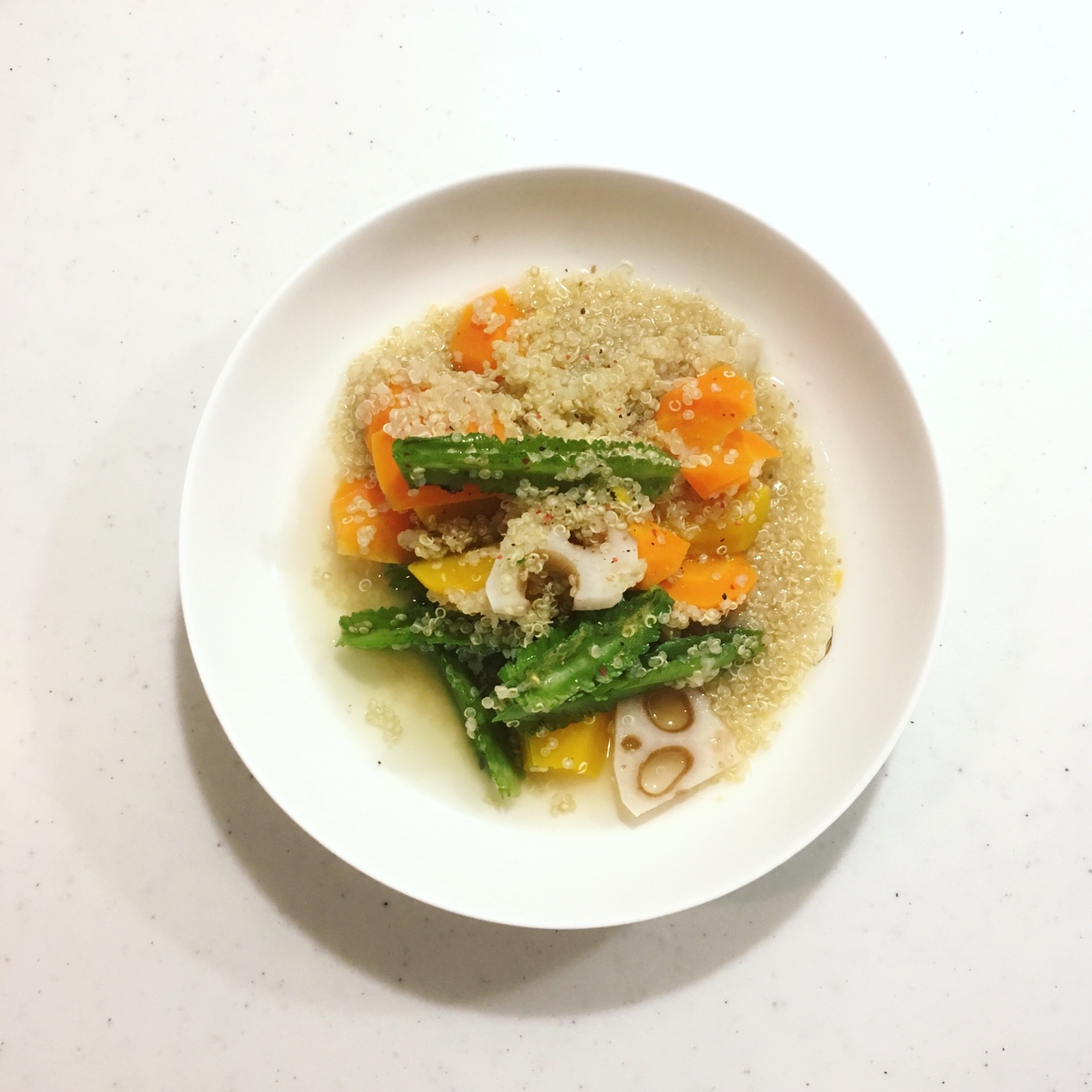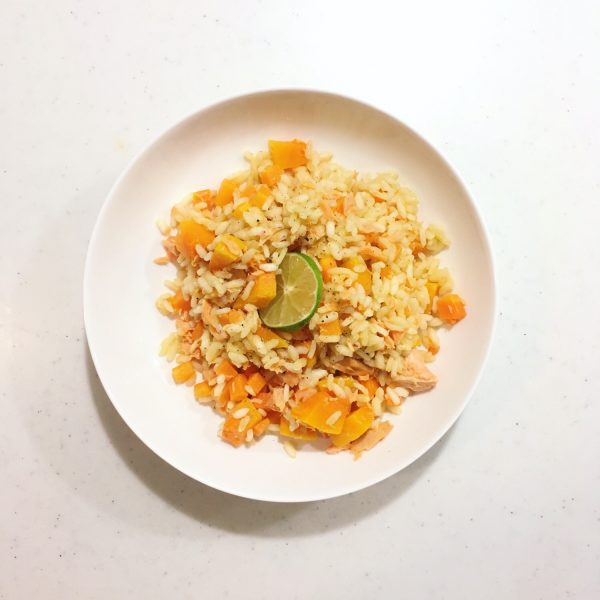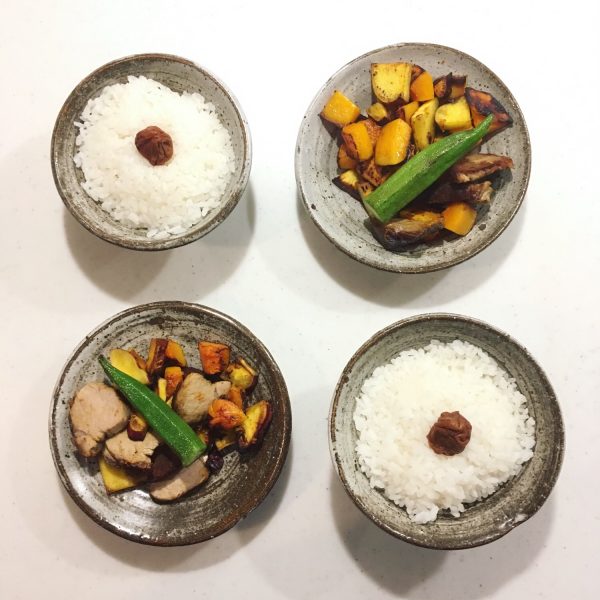Those who are familiar with Yasujiro Ozu’s movies must know “The flavor of green tea over rice” or “お茶漬けの味”, while being a cinematographic beauty and a brilliant socio-cultural representation of the the Japanese society transition of the time, it also introduces to a large audience ochazuke. Literally, as in the movie, it’s a dish that consists of pouring green tea over rice. A warm and comforting dish. While for westerners this might sounds odd, this dish, well prepared is actually delicious. It is also very simple if you have the right ingredients: rice, a hot tasty liquid, some topping eventually.
Ochazuke as you can imagine, is not supposed to be eaten with freshly cooked rice, while it is ok to do so, it is rather a recipe to use rice leftovers that have cooled down. So what I usually do is cook more rice than I need once to guarantee leftovers and then keep them for the next meal. Of course I mean Japanese rice cooked the Japanese way!!! You can use white rice or brown rice, it is equally delicious.
Then you need a hot liquid. As the name may be misleading, the liquid can be, but does not limit to green tea. Of course a nice and tasty green tea will work very well, yet my favorite recipe is with a flavor-rich dashi. A dashi made from konbu and katsuo, or from shiitake for a vegan version. The liquid must be hot enough to warm the rice if you use leftovers as it might be just at room temperature.
Finally you need a topping. Something that brings in a new texture and a new flavor. The topping is in rather low quantity, about one~two table spoon for one bowl. And as the rice and the liquid have quite a fine and light flavor you can use a topping that contrasts vividly such as umeboshi, salty salmon, mitsuba or create new combinations. Well, to be honest umeboshi is one of my favorite, and it can be used with some other toppings as well.
Why is that that I suddenly I talk so much of ochazuke when in the past 15 years I barely made one and only have them in restaurants? I think its just a matter of interesting circumstances: (1) Finding a nice dashi made from natural ingredients (dashi bars and tasting are becoming more trendy but not all dashi are made from simple natural ingredients) (2) Having leftover rice (when I was sick I would cook rice for 2 or 3 meals to have always something ready in case I would be hungry) (3) Wanting to eat a warm meal (with the temperature changing rapidly and the days becoming chilly one needs a warm, light and comforting meal…)
Here are the ochazuke I made in the past couple of weeks, top to bottom: umeboshi and pickled red chiso, umeboshi and mitsuba, 7 herbs and salmon, umeboshi grilled mushrooms and salmon.
For all the principle is the same: serve the rice in a large bowl such that it uses not more than half of it. Top with the topping of your choice. I blanched the round turnips in the 7 herbs version and slightly grilled in olive oil the long ones. Same for the mushrooms, I grilled them before. Prepare the dashi of your choice and pour while hot gently to cover the rice. Eat right away!
